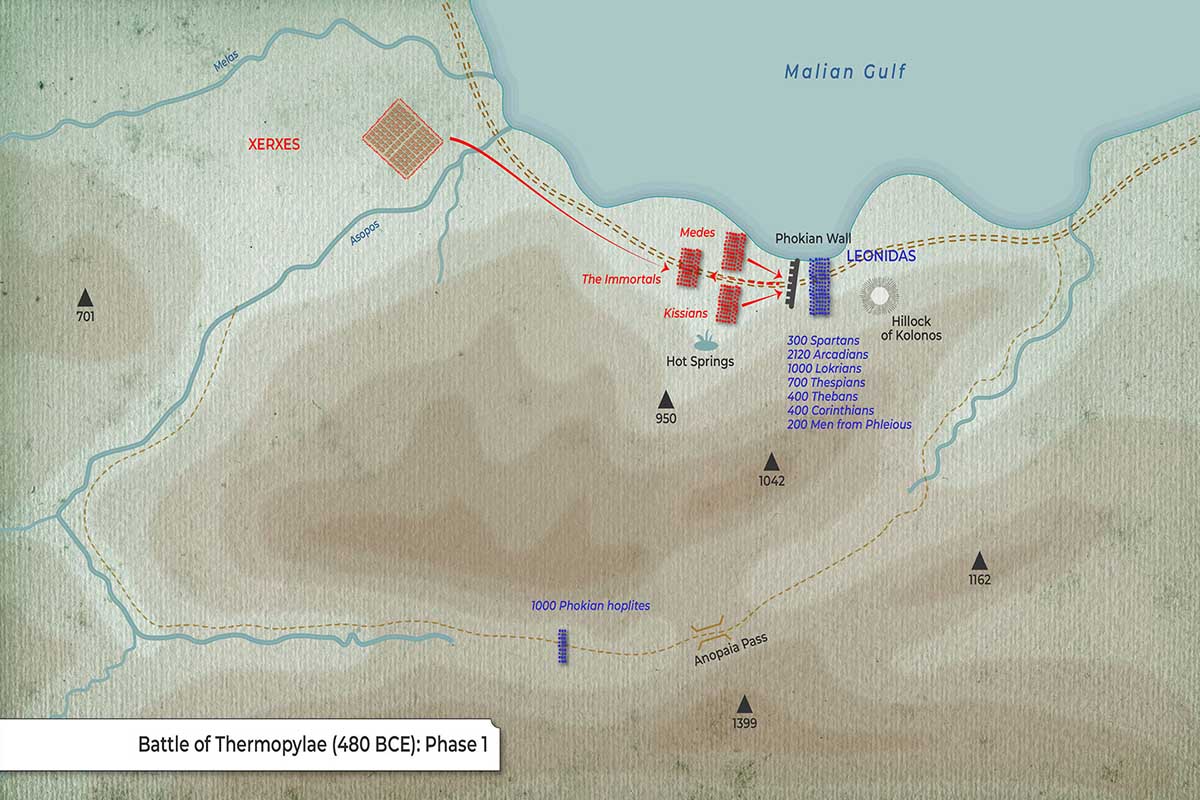During the second phase of the Battle of Thermopylae, the Persians attacked at the Phokian Wall while an elite column (The Immortals) attempted a flanking march via the Anopaia Pass.
Key Geography
-
Phokian Wall: Barrier across the coastal road at the choke point.
-
Hillock of Kolonos: Small rise just behind Greek lines.
-
Anopaia Pass: Mountain route south of the wall, leading behind the Greek position.
-
Hot Springs: Marked west of the wall (origin of “Thermo-pylae”).
-
Streams/Rivers: Melas (west), Asopos (central).
-
Coastal road & tracks: Dotted lines trace movement corridors.
Forces & Positions
| Side | Unit/Label (map color) |
|---|---|
| Greeks | LEONIDAS with main Greek force (blue) |
| Greeks | 1000 Phokian hoplites (blue) |
| Greeks | Arcadians, Lokrians, Corinthians, Phleious (blue, east of wall) |
| Persians | Medes (red block) |
| Persians | Kissians (red block) |
| Persians | The Immortals (red block) |
| Persians | XERXES & main host; Persian Camp |
Movements & Arrows
-
Red (Persian):
-
Frontal push by Medes and Kissians against the Phokian Wall.
-
Long flanking march by The Immortals from the west, turning south, then east through the Anopaia Pass toward the Greek rear.
-
Main army’s forward drift from the Persian Camp along the Asopos corridor to the front.
-
-
Blue (Greek):
-
Static defense of Leonidas at the wall.
-
Blocking position of 1000 Phokian hoplites facing the Immortals on the pass (blue dashed/solid indications).
-
Greek contingents arrayed along the eastern coastal road behind the choke point.
-
What Phase 2 Conveys
While Leonidas holds the bottleneck, Xerxes maintains pressure at the front and sends his elite Immortals on a wide flanking route via Anopaia. The Phokians are posted to intercept, setting up the decisive outflanking that will define the next phase if the pass defense is bypassed or broken




